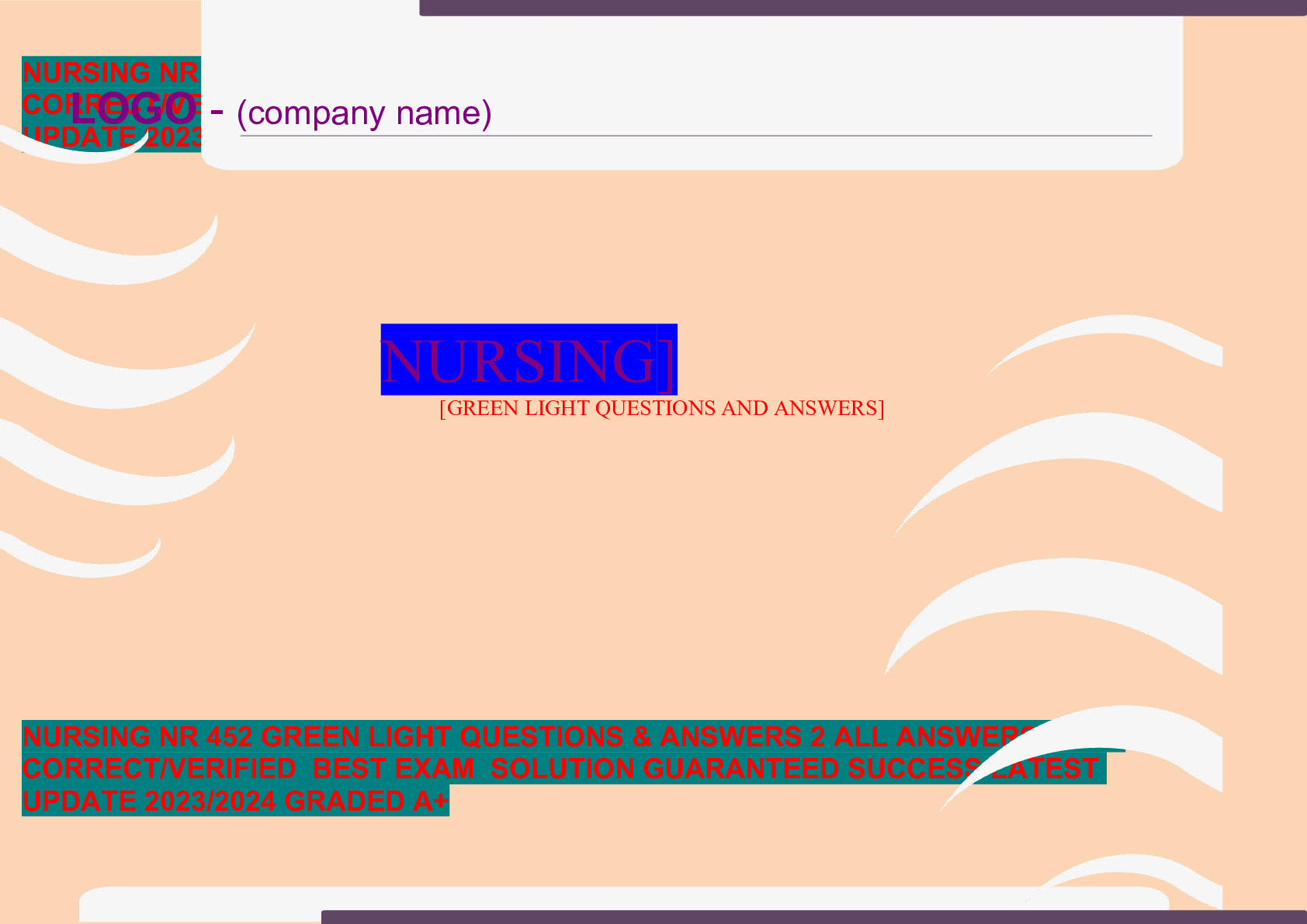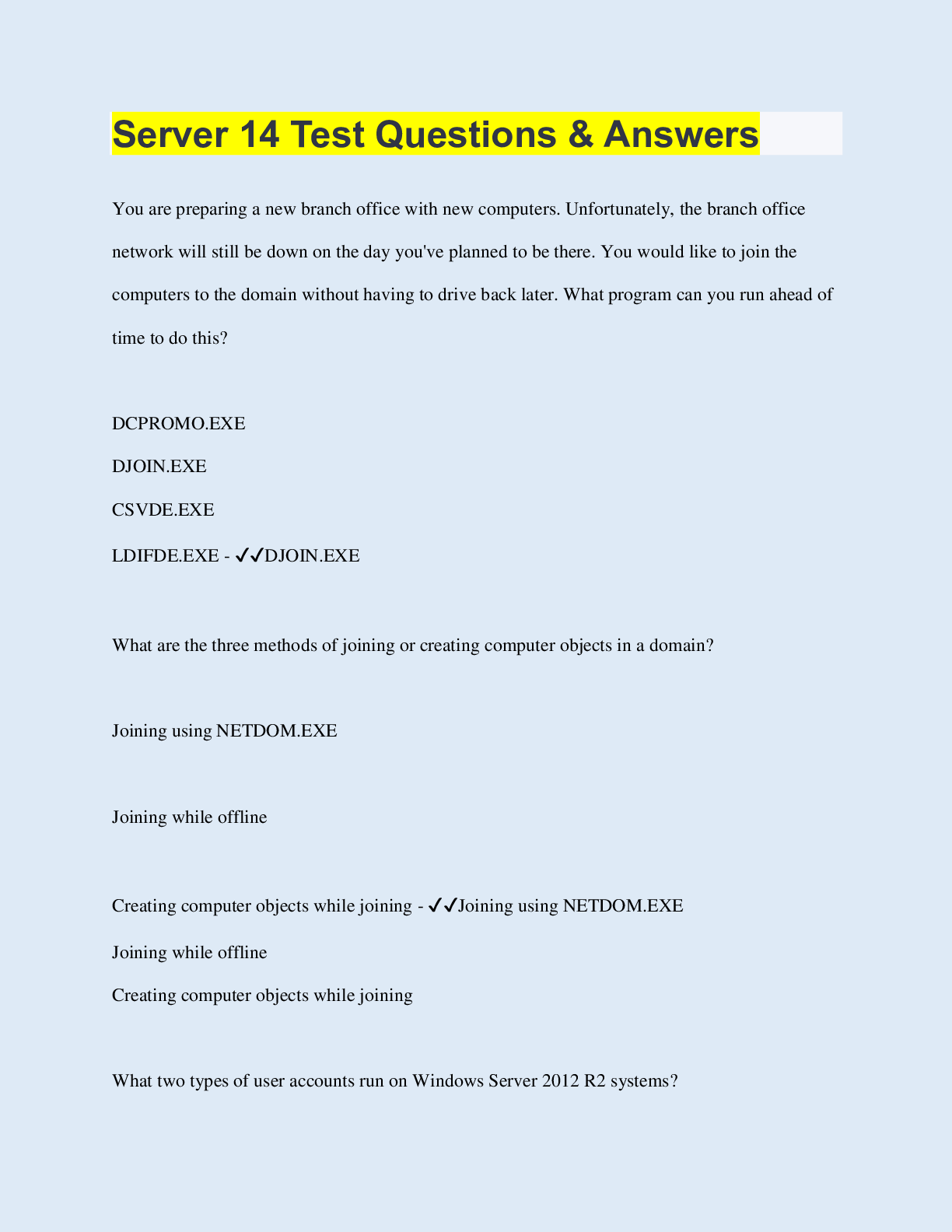*NURSING > QUESTIONS & ANSWERS > AACN CSC (AACNCSC) Cardiac Surgery Essentials for Critical Care Nursing, Exam Questions & Answers (All)
AACN CSC (AACNCSC) Cardiac Surgery Essentials for Critical Care Nursing, Exam Questions & Answers
Document Content and Description Below
AACN CSC (AACNCSC) Cardiac Surgery Essentials for Critical Care Nursing, Exam Questions & Answers-You are caring for a patient with an intra-aortic balloon pump and note blood in the tubing. Your init... ial action should be: A. Stop the balloon pump and notify the physician. B. Administer 100% oxygen to help displace the helium and notify the physician C. Leave the IABP running and notify the physician. D. Purge the IABP manually to clear the blood from the tubing. - A. Blood in the IABP tubing indicates a balloon rupture which can cause gas embolus. However, helium is thought to be easily absorbed in the presence of balloon rupture and oxygen is not generally indicated. The appropriate action is to disconnect the balloon from the console or turn it on standby so the movement of helium is stopped and notify the physician. The nurse will need to prepare for IABP removal and replacement if needed. When caring for a patient immediately post CABG the nurse recognizes that the most likely cause of hypotension in the immediate post-operative period is A. Decreased circulating volume requiring no intervention unless persistent > 12 hours. B. LV failure requiring an inotrope as first line treatment for any hypotension. C. Decreased circulating volume representing the need for increased fluid administration. D. LV failure requiring an assist device. - C. Hypotension in the immediate postoperative period is usually caused by low circulating volume and responds to treatment with fluids. Volume is the first line treatment for hypotension. If there is no immediate response to volume administration, 500 mg of IV calcium chloride is often given. Existing vasopressors, such as norepinephrine, can also be adjusted. It is important for hypotension to be promptly treated. Persistent hypotension can result in hypoperfusion and end organ damage. LV failure is not the most common cause of hypotension in the immediate post-operative period and therefore inotropic agents are not first line agents used in the treatment of hypotension. Hypotension that does not respond to fluid administration may require an inotrope. Preoperative clopidogrel should be held for how many days in the elective surgery patient: A.It does not need to be held. B. 1-2 days. C. 5-7 days. D. 30 days. - C. Clopidogrel inhibits the P2Y12 receptor on the platelet for the lifetime of the platelet (10 days). Inhibited platelets cannot participate in clotting, so the risk of bleeding increases with antiplatelet drugs. Most clinical trials have identified an increased risk in bleeding, transfusion, and re-exploration when clopidogrel is taken within 5 days of surgery, and no increase in bleeding or transfusions when clopidogrel is stopped for > 5 days prior to surgery. Therefore, clopidogrel should be stopped for 5 to 7 days prior to elective surgery. Emergent surgery can be done regardless of when the last dose of clopidogrel was taken, but will be associated with increased bleeding and need for platelet transfusions. The term OPCAB refers to: A. combination open heart surgery and percutaneous procedure. B. CABG surgery without the use of cardiopulmonary bypass (CPB). C. the use of thoracotomy instead of sternotomy. D. patients who are fast tracked to be discharged in less than 5 days. - B. OPCAB refers to off-pump coronary artery bypass. Surgery is done without CPB but it still involves a median sternotomy. MIDCAB (minimally invasive direct coronary artery bypass) is performed on a beating heart without CPB and without the use of a median sternotomy. MIDCAB is commonly done through an anterior thoracotomy incision and is used to bypass the mid to distal LAD with a left internal mammary artery (LIMA) graft. A ministernotomy can also be used to gain access during MIDCAB. Which of the following patients is at highest risk for neurological complications after CABG? A. A 63-year- old patient with a BMI of 30 undergoing OPCAB B. A 85-year-old patient with an atherosclerotic aorta undergoing CPB C. A previously healthy 50-year-old woman undergoing CPB D. A 67-year-old man having a MIDCAB to the LAD with no known history of hypertension - B. Severe atherosclerosis of the aorta, advanced age, use of CPB, aortic cross-clamping, diabetes, hypertension, female sex, and history of stroke place patients at high risk for neurological complications following cardiac surgery. Other factors contributing to neurological complications include alcohol abuse, heart failure, arrhythmias, and hyperglycemia. The nurse caring for the post operative cardiac surgery patient recognizes the following as potential contributors to post-operative vasodilation that can cause hypotension: A. Cooling that occurs while on cardiopulmonary bypass, and use of vasodilators post op. B. Use of norepinephrine or dopamine to support BP immediately post-op. C. Inflammatory response due to CPB and use of norepinephrine to support BP D. Rewarming that occurs after return to the ICU, and the inflammatory response to use of cardiopulmonary bypass during surgery - D. Intraoperative cooling results in vasoconstriction; rewarming after surgery causes vasodilation and can contribute to hypotension if volume administration is inadequate for the increased size of the vascular space caused by vasodilation. The use of CPB stimulates an inflammatory response that results in vasodilation that contributes to hypotension. Norepinephrine and dopamine cause peripheral vasoconstriction, not vasodilation. A characteristic of a fast-track pathway after CABG would include: A. anticipated discharge between post-op days 7 and 8. B. a defined medication strategy to prevent postoperative atrial fibrillation. C. liberal use of opioid medications to increase patient comfort during the ventilator weaning process. [Show More]
Last updated: 1 month ago
Preview 1 out of 70 pages
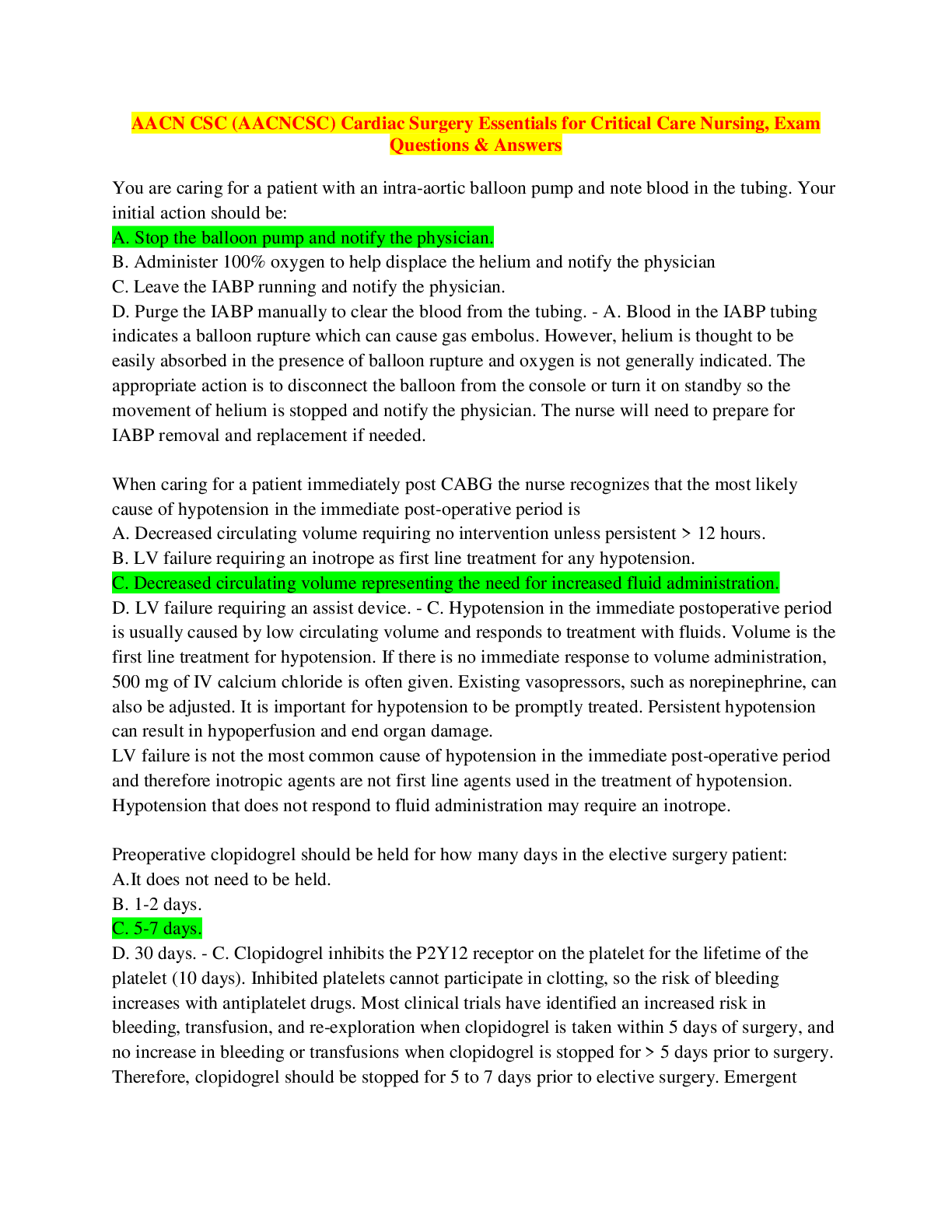
Reviews( 0 )
Document information
Connected school, study & course
About the document
Uploaded On
Jun 07, 2023
Number of pages
70
Written in
Additional information
This document has been written for:
Uploaded
Jun 07, 2023
Downloads
0
Views
44

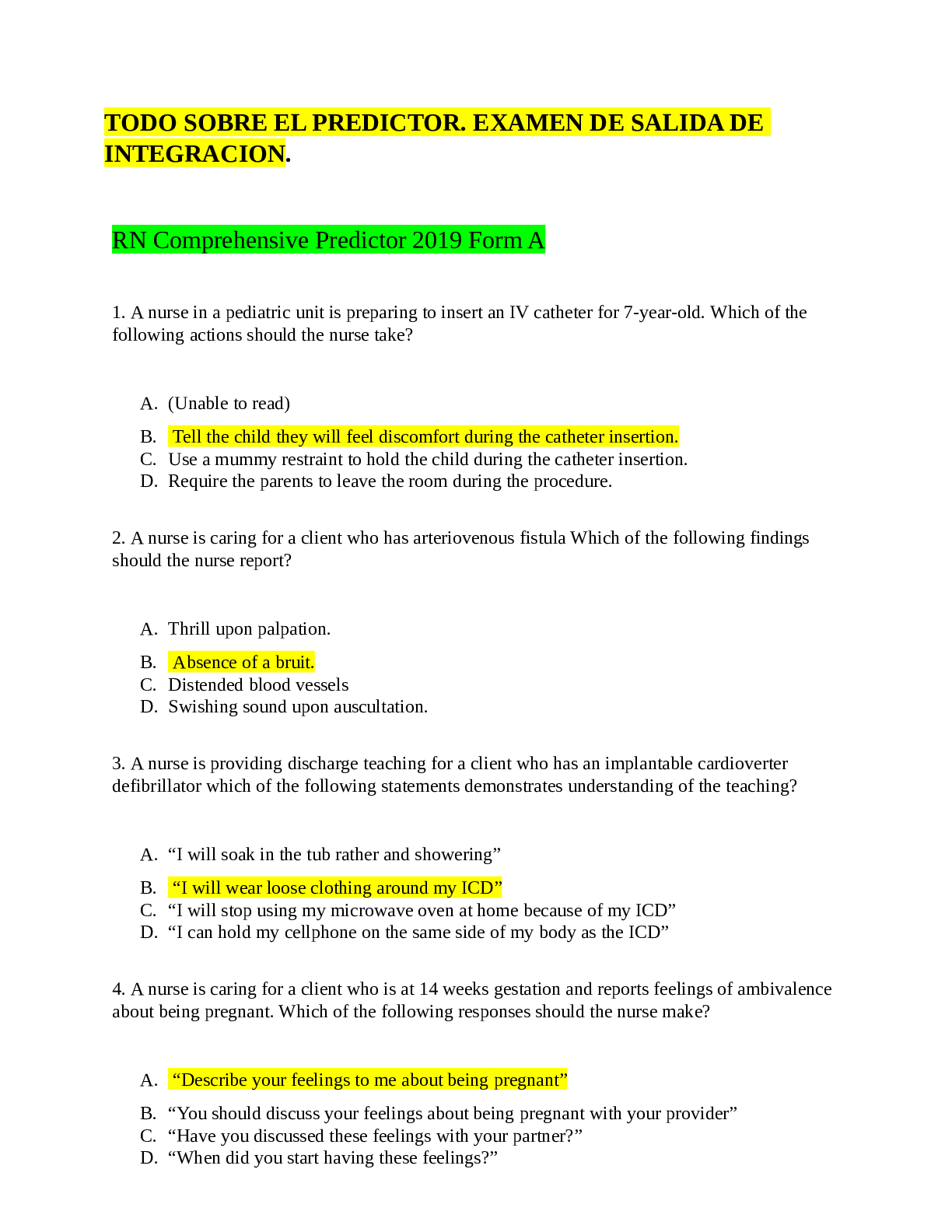

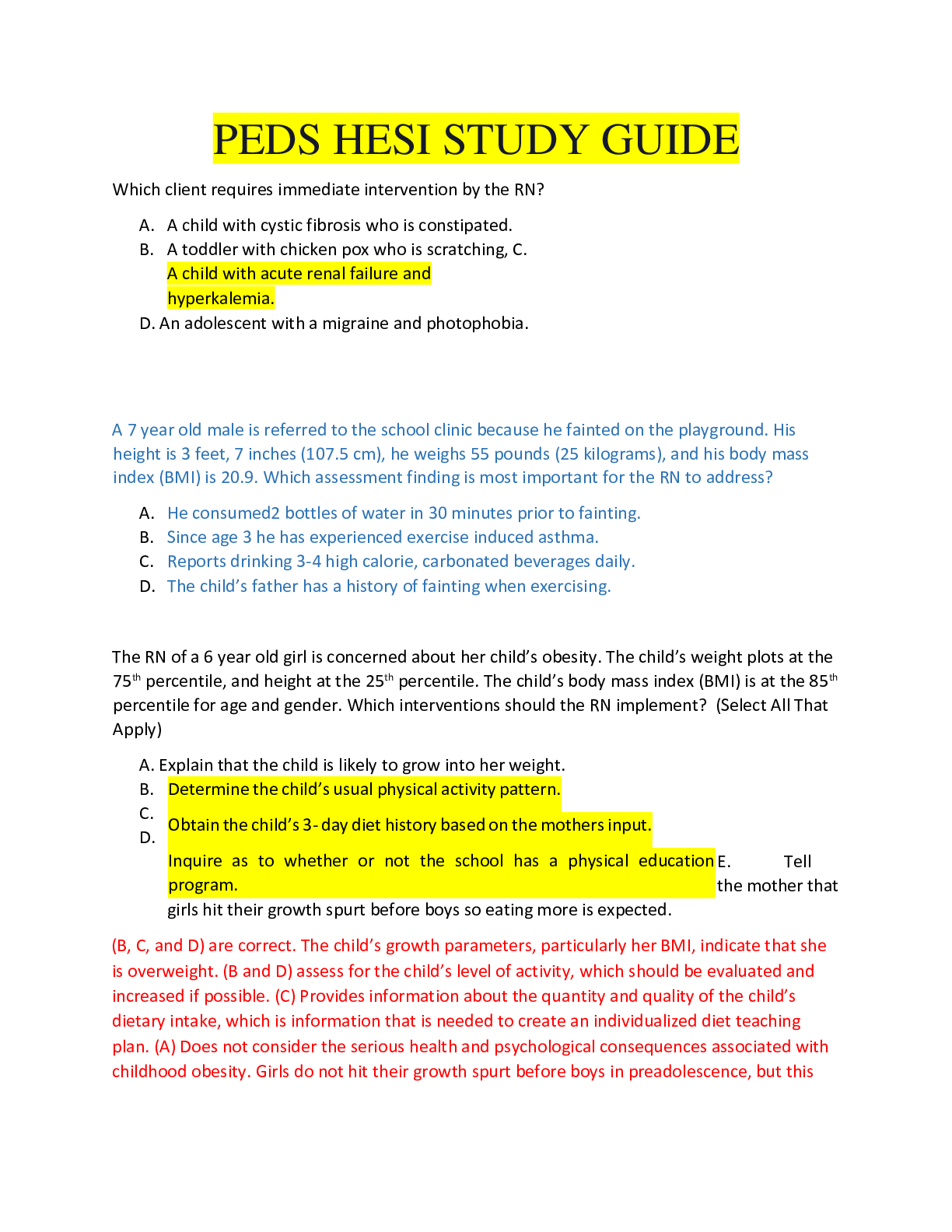
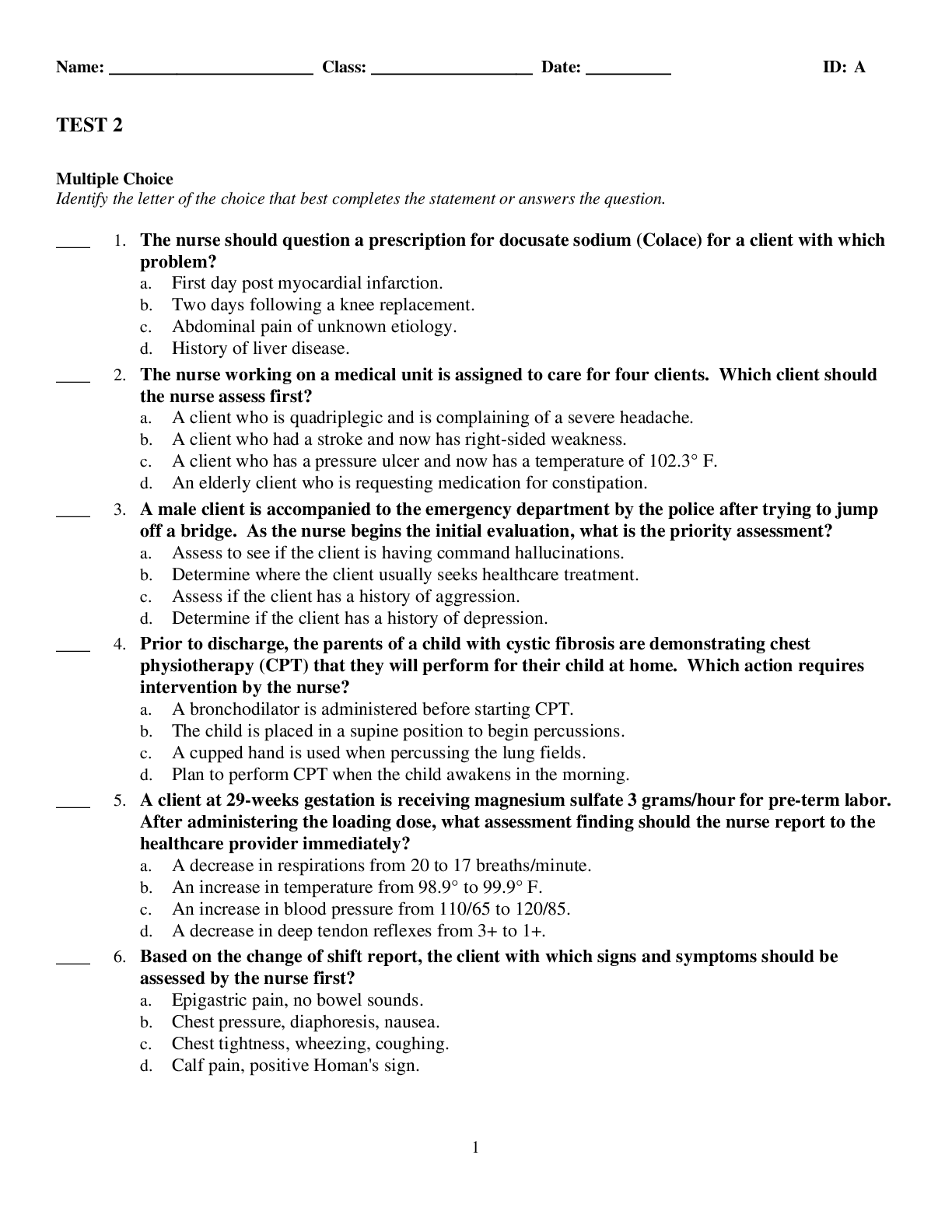

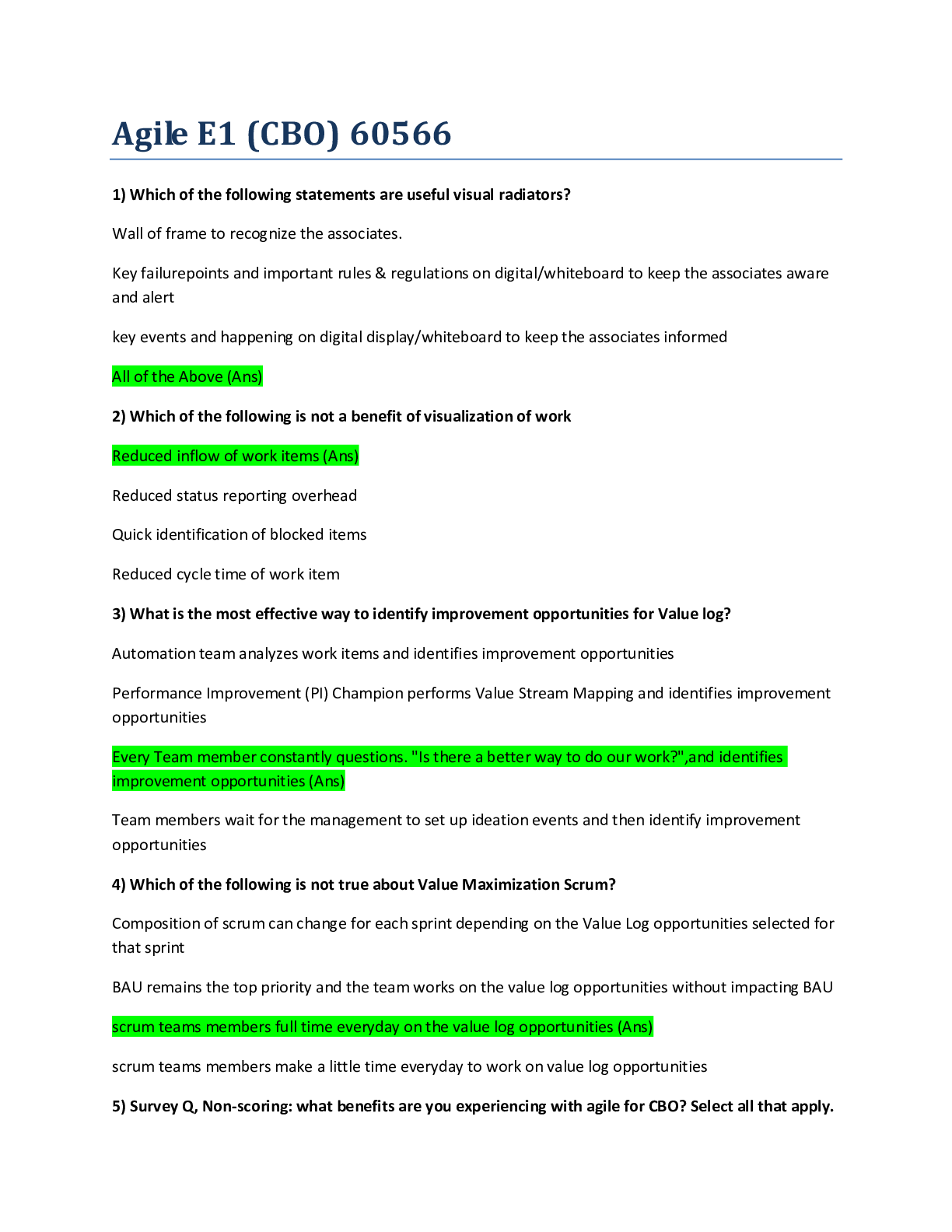

.png)
.png)

.png)
.png)
.png)
.png)
.png)

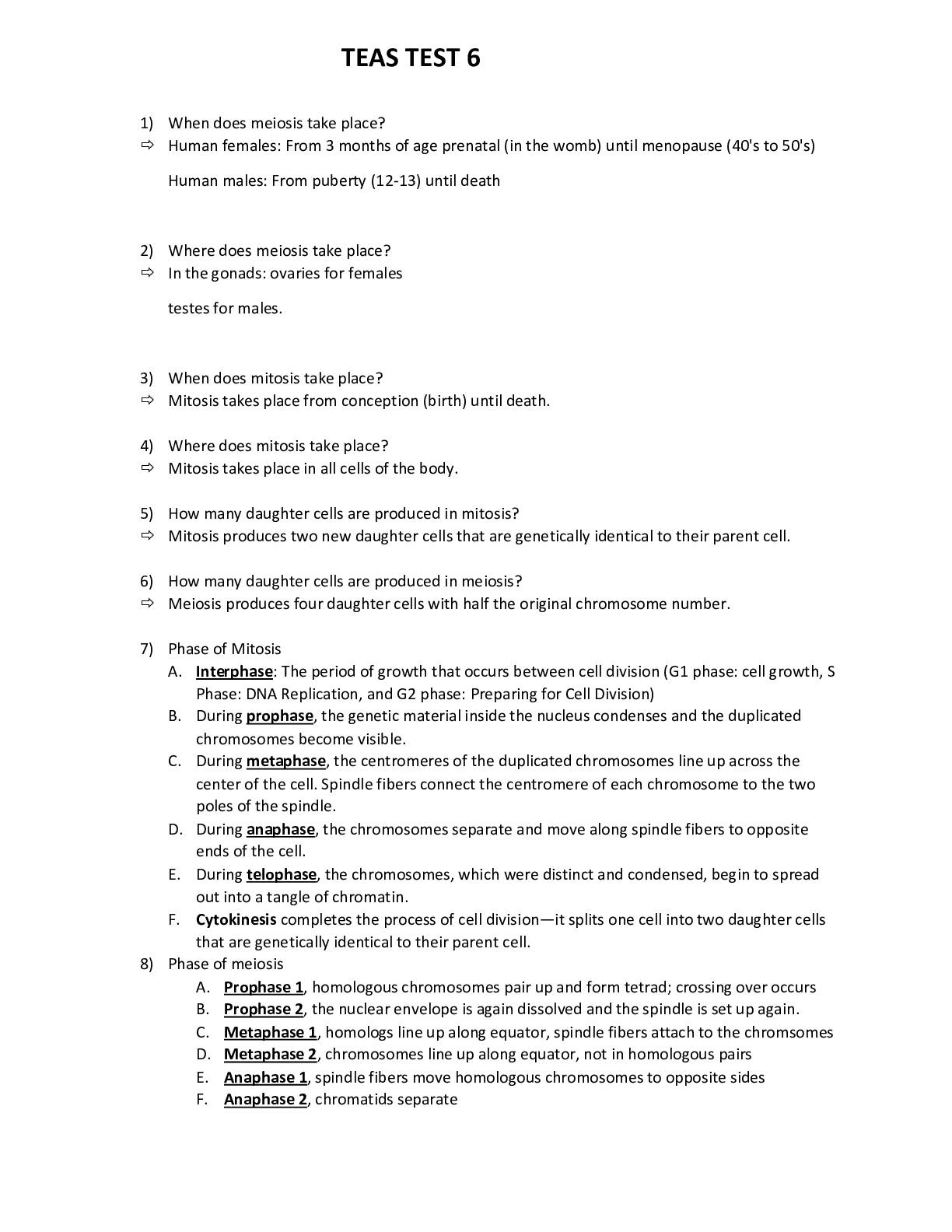
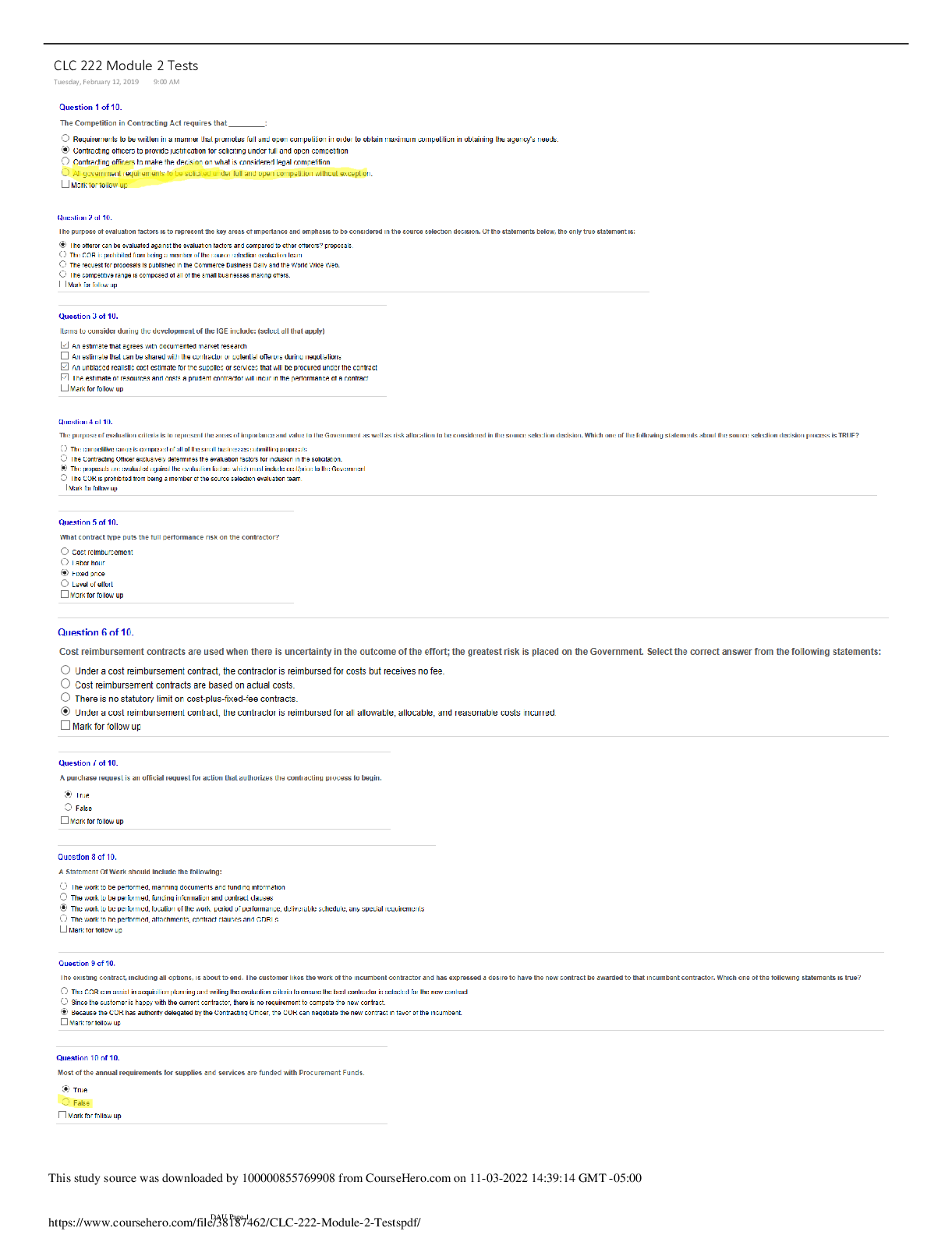

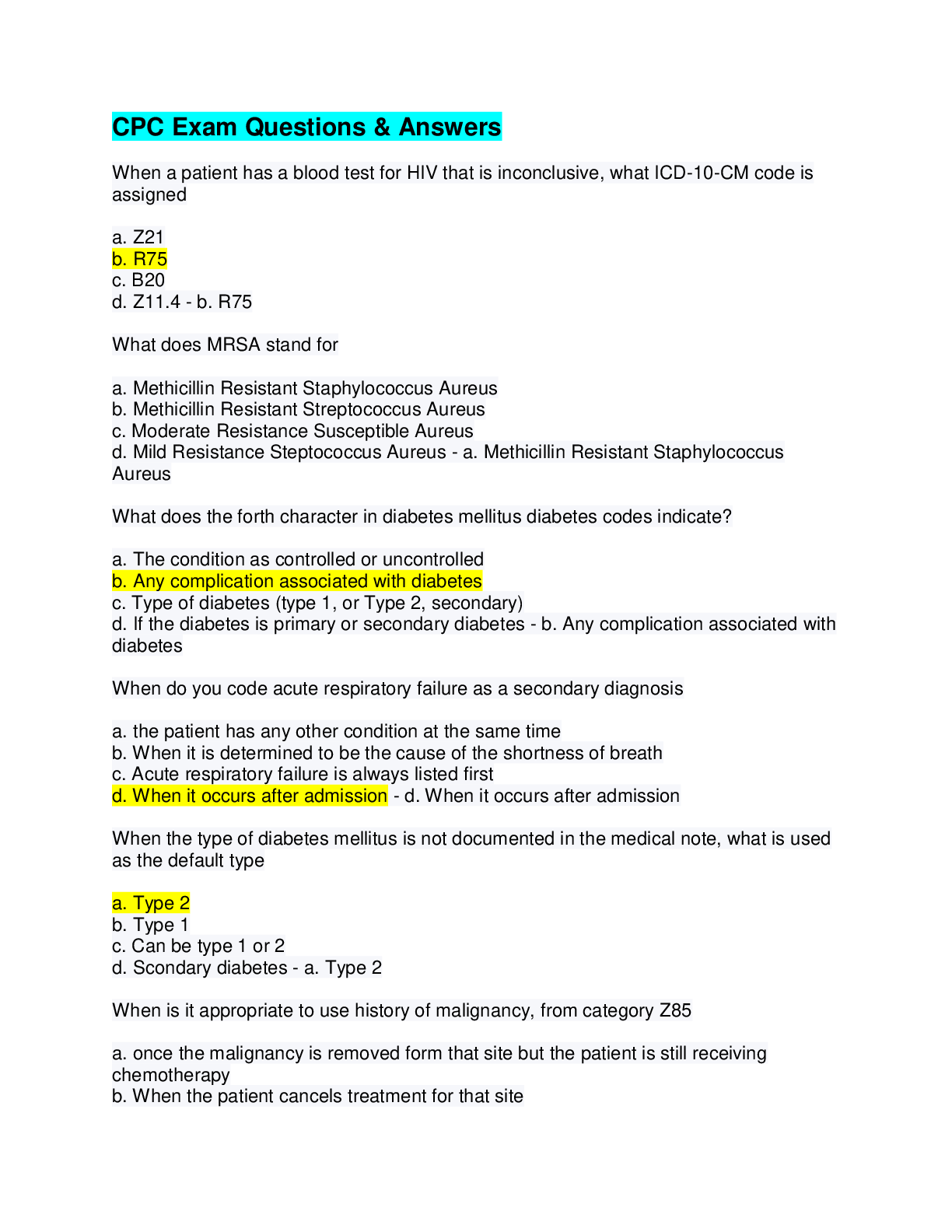

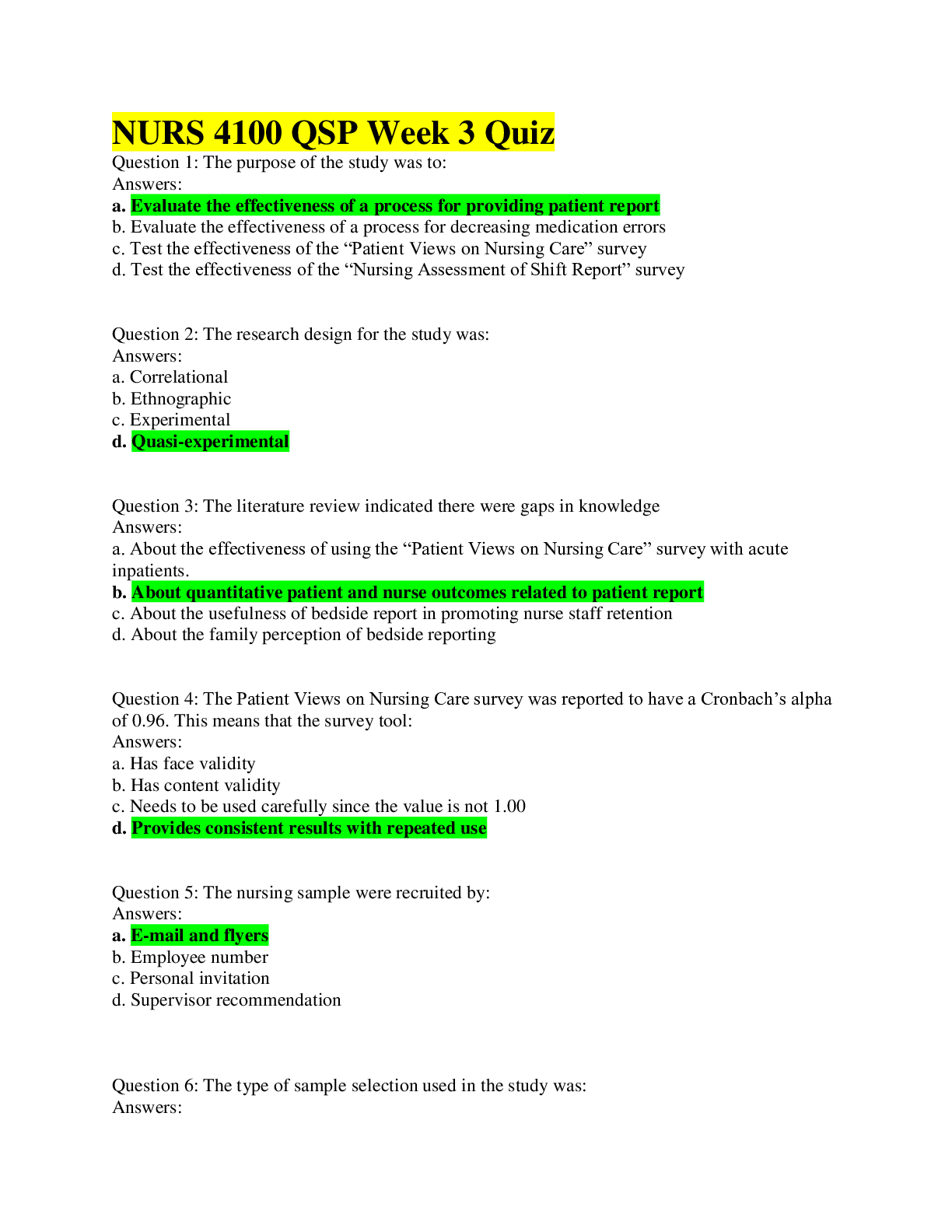
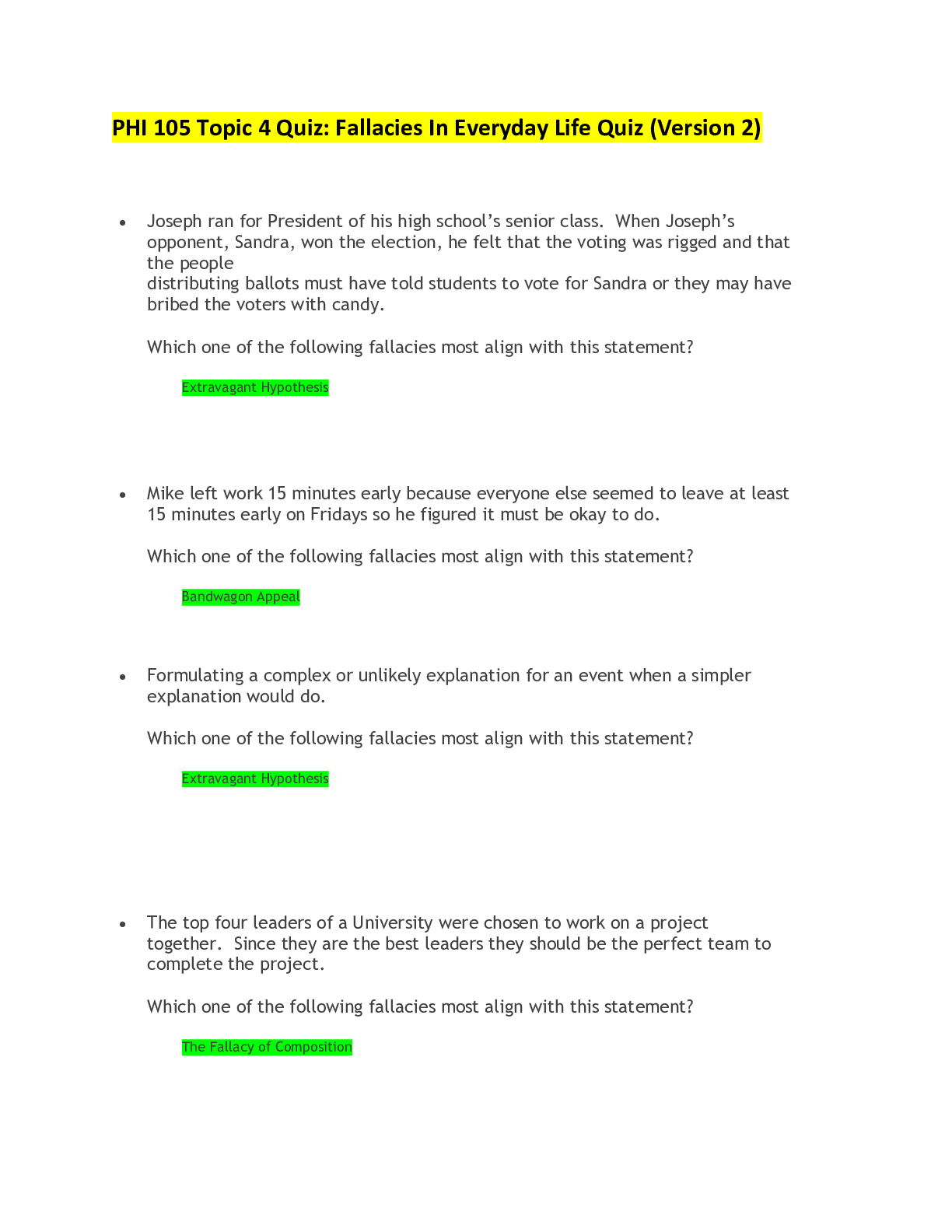
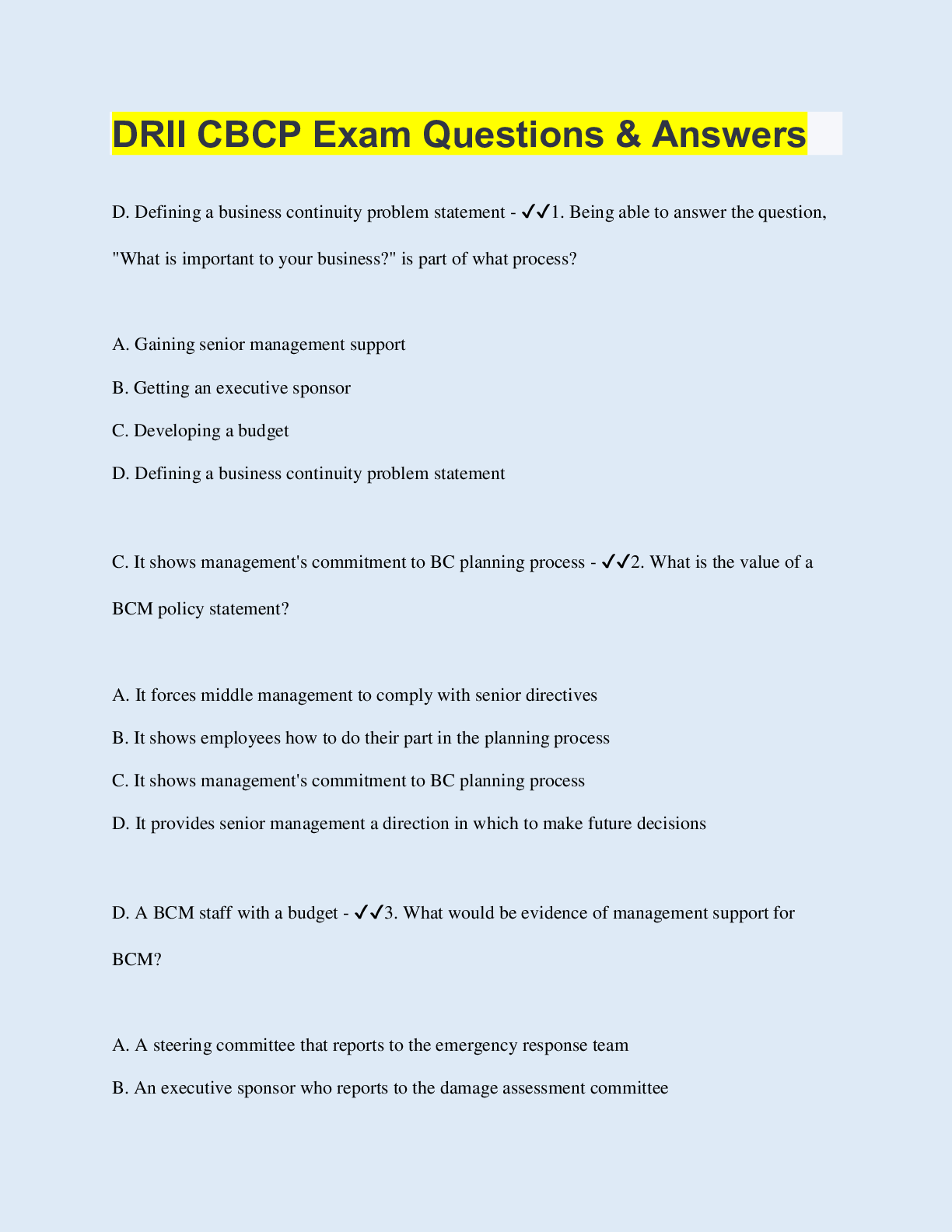
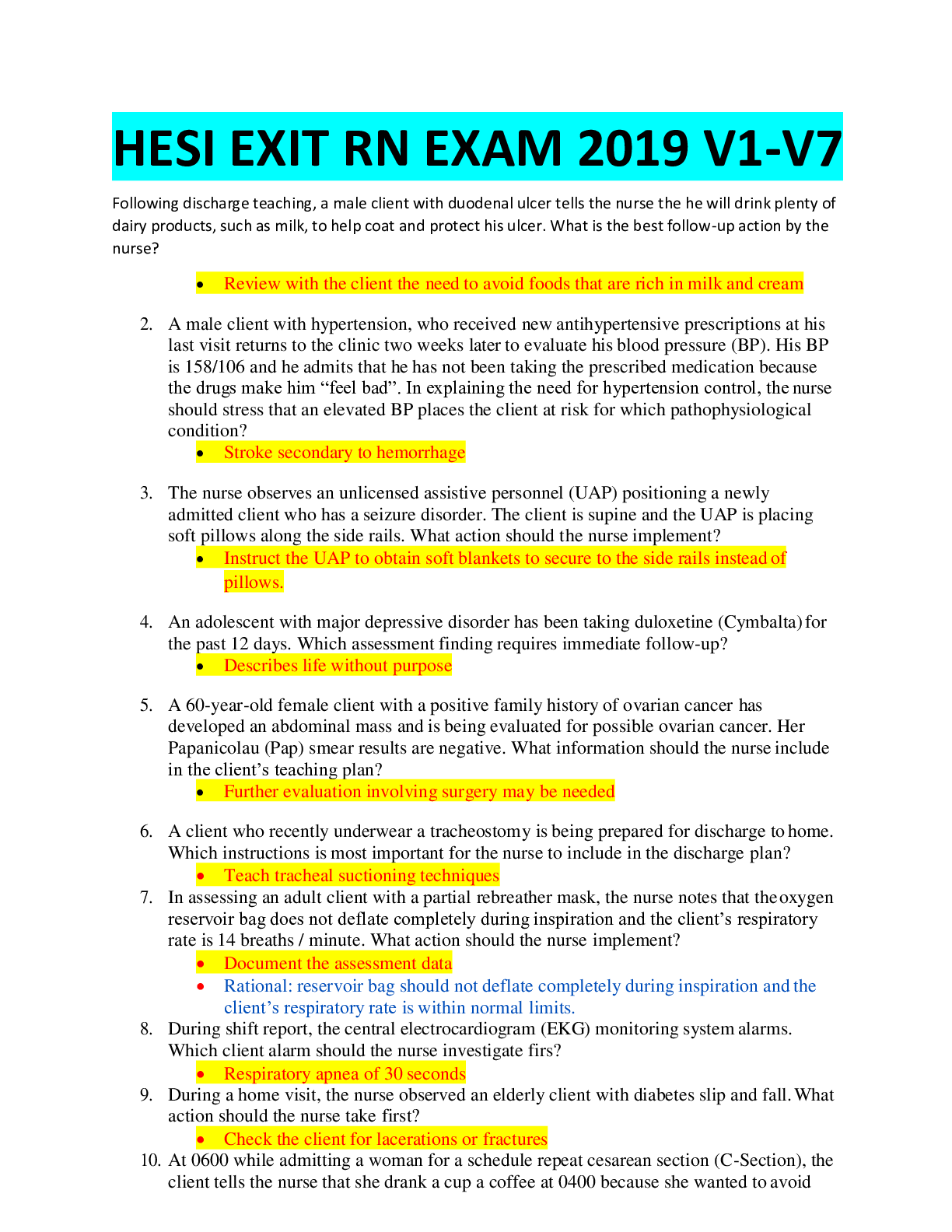
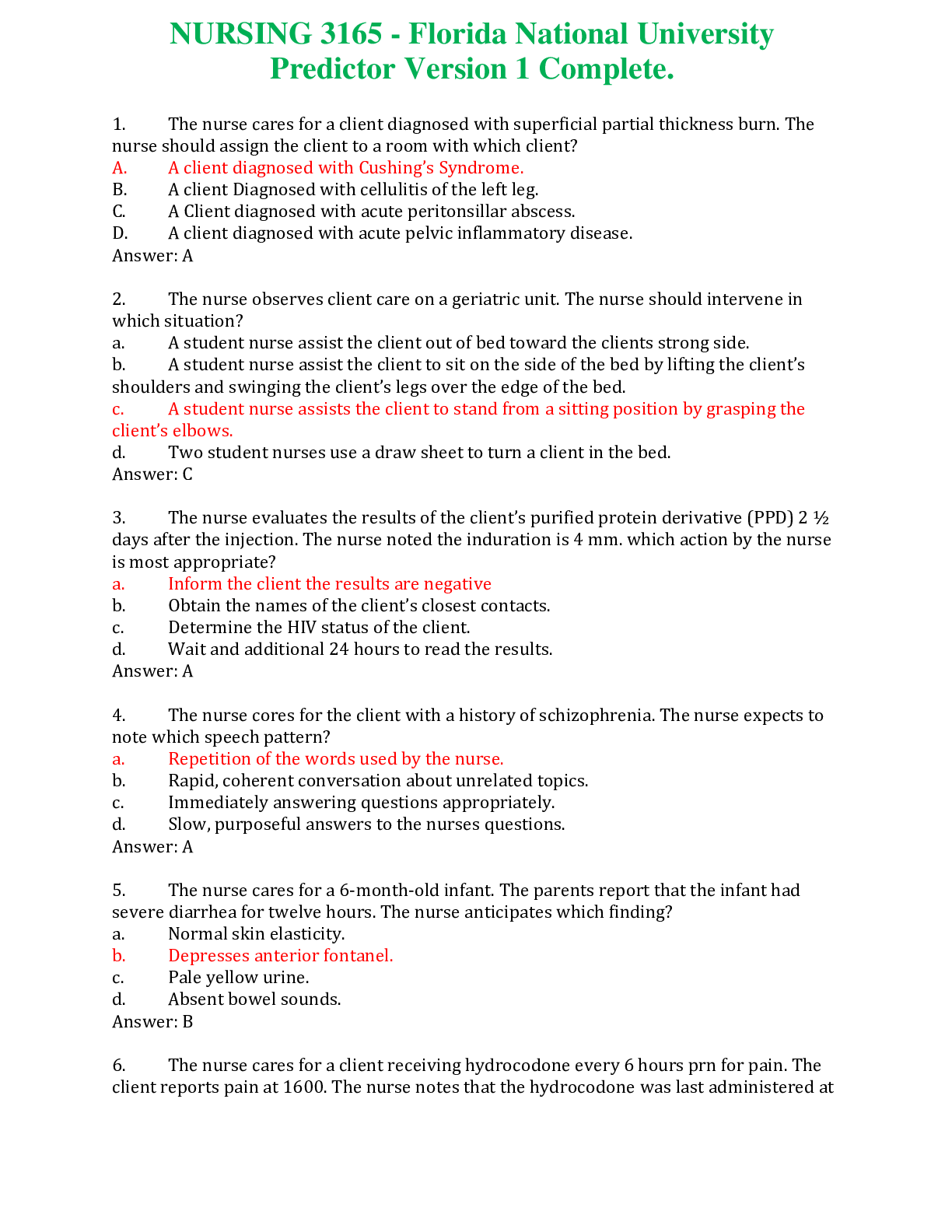
.png)


